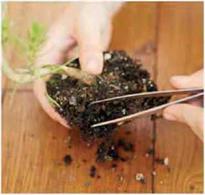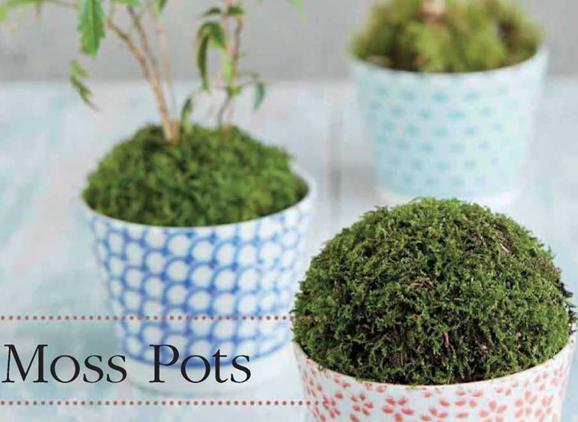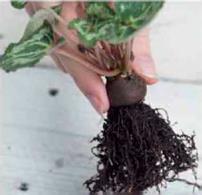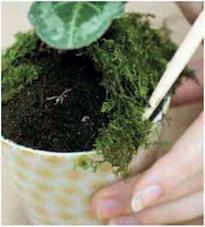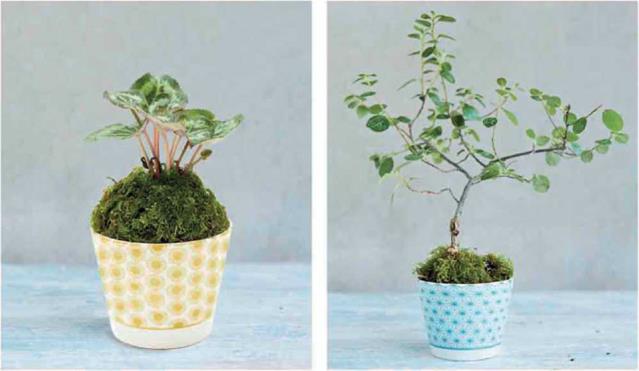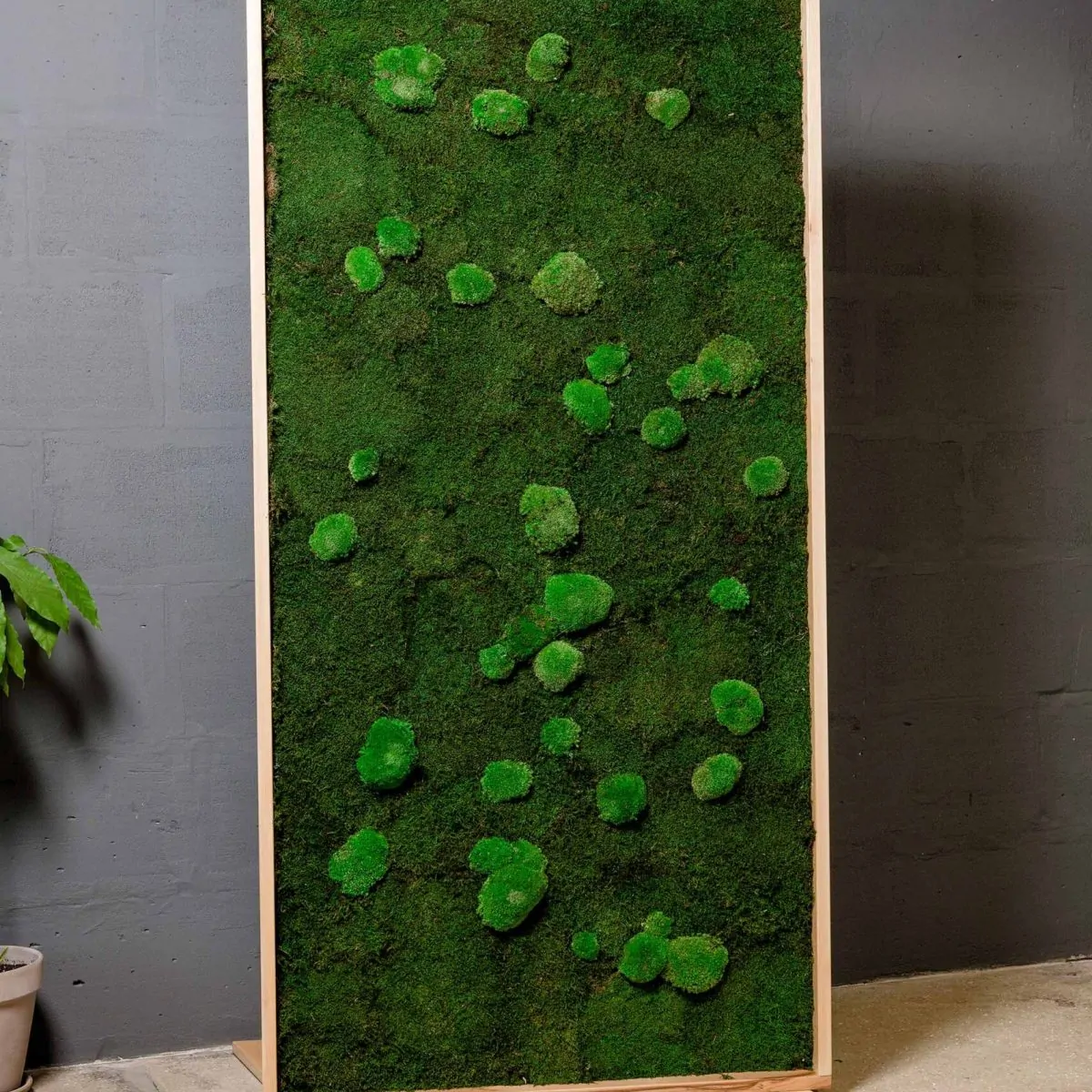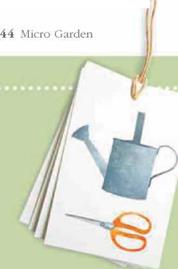
 Instant bonsai is all about creating a natural miniature landscape using moss and readily available plants. Delicate but bold, it makes a dynamic impact.
Instant bonsai is all about creating a natural miniature landscape using moss and readily available plants. Delicate but bold, it makes a dynamic impact.
TIME IT RIGHT Early spring is the best time to pot your plant, not when the plant is dormant in winter. You can choose evergreen or deciduous sapling trees, shrubs, or perennials.
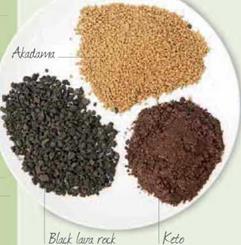
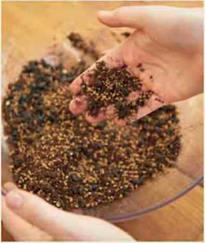
container with drainage hole
plastic mesh scissors
aluminum wire wire cutters tweezers
small pruners or bonsai scissors small scoop
dibber, chopstick, or pencil
spatula
water mister
PLANT LIST
a compact moss, such as woodland or carpet types
Pinus thunbergii (Japanese Black Pine)
particles
|
2 |
Mix your soils with a little bonsai or general-purpose fertilizer. Make sure the pot you use has a drainage hole in the bottom; this is to prevent the roots from sitting in water and rotting.
|
1 |
Select your soils first: 3 parts akadama, 1 part keto, 1 part black lava rock. These specialty soils meet the needs of smaller containers by absorbing and retaining moisture but also allowing excess water to drain.
|
|
чЛ—Project Steps
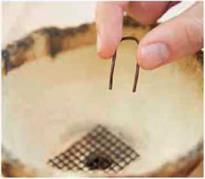 |
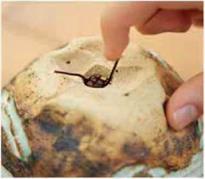 |
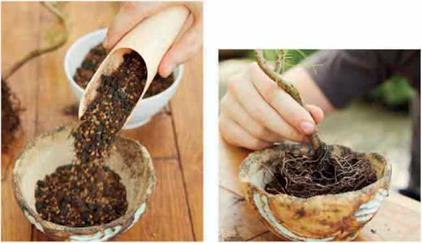
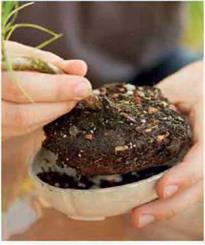
|
3 |
Cut out a square of mesh to size and position it over the drainage hole; this will stop the potting mix from falling through and prevent clogging, enabling vital airflow. Cut a short section of aluminum wire with wire cutters and bend it into a U-shape.
|
|
|
4 |
Insert the wire through the middle of the mesh. Make sure the wire ends come through the drainage hole, then bend them so that they are flush with the bottom of the bowl to fix the mesh in place.
|
3 |
Carefully take your plant out of its pot. We have used a Japanese Black Pine.
![]()
Using tweezers, carefully remove as much of the soil from the surface and root ball as possible, then tease out the roots. Prune back any very long roots.
|
7 |
Put a thin layer of black lava rock in the base of the pot for extra drainage, then pour in a little of the soil mix to the correct height for the root ball of your plant.
|
8 |
Position the plant to fit your miniature landscape design— it doesn’t have to be centered. Here, we’re recreating the look of a tree growing out of a mossy hill.
|
|
|
|
|
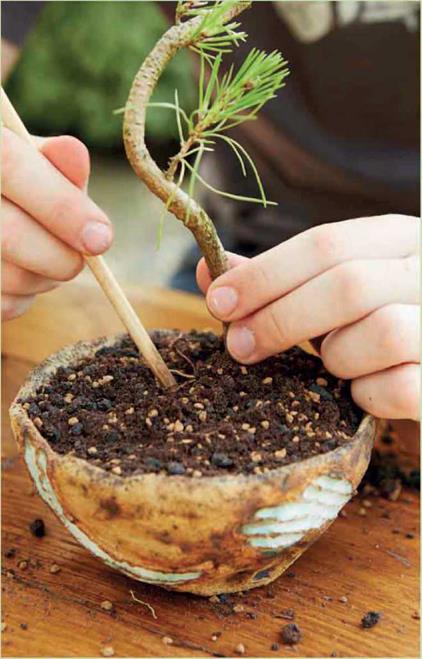
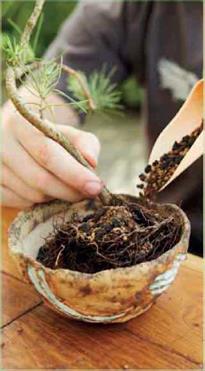
чЛ—Project Steps
99*99999999999999999999999999999999999999

![]()
|
И |
Moisten and clean up pieces of moss and position them around the base of the pine. Look to see if the moss is growing in a particular direction and try to add pieces in contrasting directions. Leave a portion of the soil uncovered.
To finish, pour a top dressing of black lava rock over the bare piece of soil to create the effect of water and add interesting texture. Smooth over the black lava rock with a spatula and water everything well. A water mister is useful for the moss.
![]()


‘Where to site Place your bonsai outdoors, ideally, since it needs direct but not strong light; if kept inside, you’ll need a well-ventilated room. Position where the plant won’t dry out. Frost protection is needed in winter, and it shouldn’t be kept somewhere too wet.
Watering and feeding Small
containers dry out quickly so require regular watering. In spring and fall, water once a day; in summer, twice a day. During winter, water every 2-3 days,
but not at night in case the soil freezes. The fertilizer used at planting should last 1-2 years. You can add additional fertilizer by gently mixing it into the soil, but only use a tiny bit, since the idea is to keep the plant from growing too big.
General Care To keep your bonsai plant small, prune long growth back to a branch or secondary bud that is going to continue growing; this is especially important with pines. Trim back long roots every 2-3 years in early spring. Repot when the plant fills the pot and roots come through the drainage hole.
|
miniature moss hills and mountains adorned with trees. These whimsical gems are perfect to enjoy in the smallest of spaces at home or at work. ‘
l /
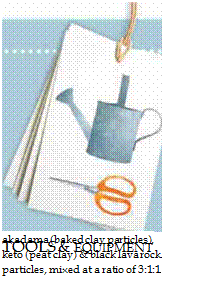 |


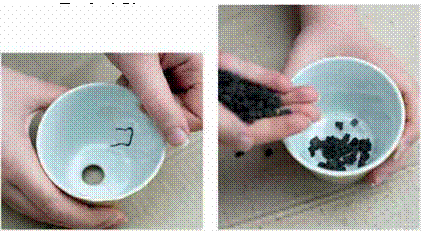 |
![]()
|
I |
Mix your soils, then add a little bonsai or general-purpose fertilizer. Cut a square of mesh to size for your teacup. Snip a short section of aluminum wire, bend it into a U-shape and insert through the middle of the mesh.
|
jm |
|
3 |
Gently remove soil from the root ball and tease out the roots of the cyclamen with tweezers. Scoop enough soil into the cup so that the plant sits proud of the rim.
|
2 |
Position the mesh over the drainage hole and bend the ends of the wire so that they are flush with the bottom of the cup. Put a thin layer of black lava rock particles over the base of the container for additional drainage.
|
|
Build up the soil into a hill around the plant. Moisten and clean up pieces of moss and press them over the soil, tucking them into the rim. Mist everything well.
|
|
|
Select teacups that show of the plants and work well as a set |
Miniature


